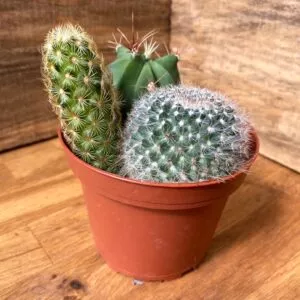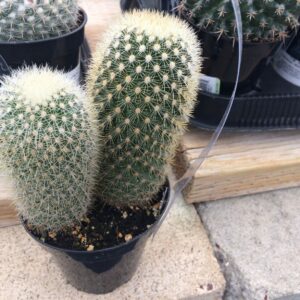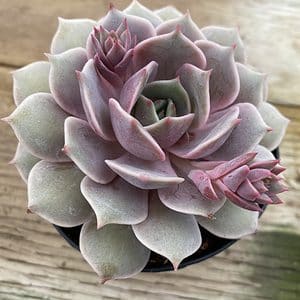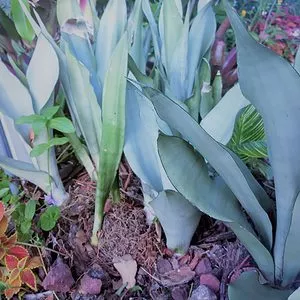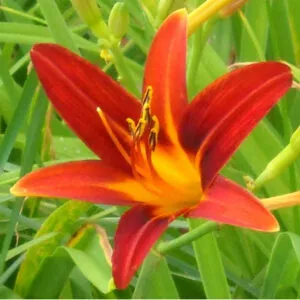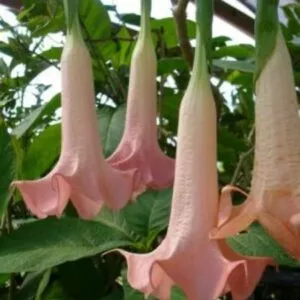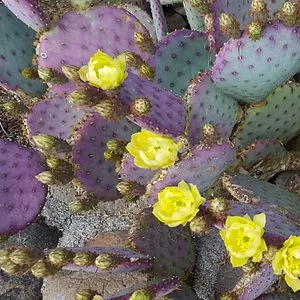No products in the cart.
Table of Contents
Texas sage bushes add dazzling purple flowers to a spring pollinator garden. The Texas sage shrub is a native plant to the Southeastern United States that grows well in the USDA hardiness zones 8 to 11.
To grow Texas sage is low maintenance compared to other plants, and they work well in low rainfall areas to brighten the outdoor space. The best part is they look great with other plants.
Plant Name: Leucophyllum frutescens
Other Name: Texas Ranger, Texas Sage, or Purple Sage
Plant Type: Evergreen shrub
Native Areas: North America
Light Requirement: Full sun
Watering: Low
Fertilizer: None needed
Toxicity: Non-toxic to humans but toxic to pets
Temperature: Cold tolerant
Propagation: Seed
Growth: 6 feet tall and wide
Soil Type: Well-drained soil
USDA Hardiness Zones: 8-11
More About Texas Sage Plant
For those of you living in the dry weather of the USA, the shrub is a plant indoors that thrives in poor soil. The species known as the Leucophyllum frutescens is an evergreen perennial shrub belonging to the Scrophulariaceae family.
It is native to North America and can grow well in the landscape with minimal care.
The plant goes by many names:
Purple Sage
Texas Ranger
Texas Sage
The evergreen shrub can grow up to six feet tall and spread six feet wide. The plant is native to Texas and Mexico, growing on rocky slopes in alkaline soils. One thing that stands out is the beautiful gray-to-silvery foliage due to the fine silvery hairs on the leaves.
Furthermore, it is an excellent plant with a fantastic purple blossom display from summer to fall. As the plant blooms after the rainfall, it has received the exciting name barometer bush. The flowers do not bloom long but can bloom several times in the growing season.
Once the flowers are spent, two valved capsules take their place.
Texas Sage Plant Care
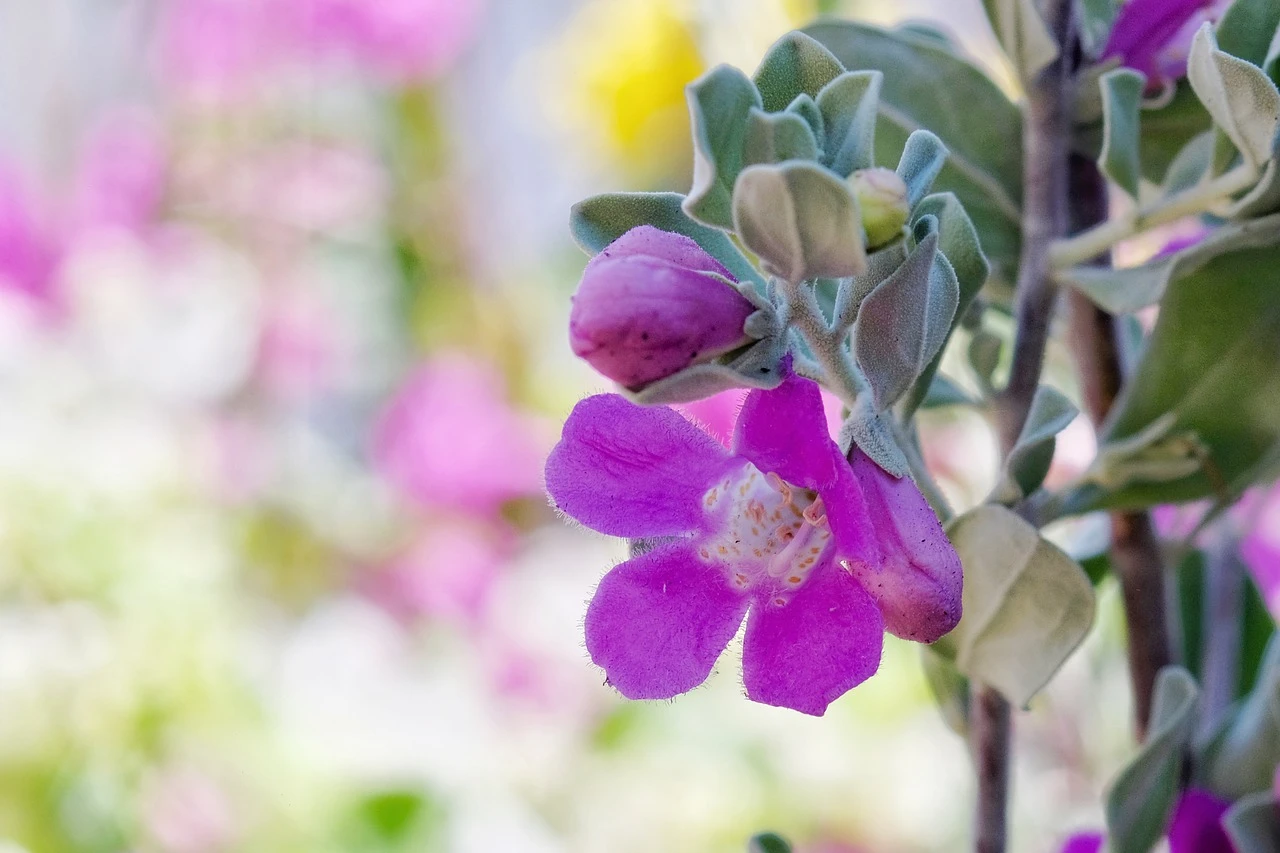
Texas sage is highly drought-tolerant, making it well-suited to arid and desert climates. It can withstand long periods of dry conditions. Texas sage is relatively low-maintenance.
It prefers well-draining soil and requires occasional pruning to maintain its shape. Pruning is typically done after flowering to remove dead or leggy growth.
Best Soil For Texas Ranger
The Texas sage bushes grow from sandy, clay-rich soil to loamy soil if you have well-drained soil. It is important to avoid poor draining soil that remains soggy as it can lead to root rot. So keep checking the soil density to prevent wet soil as these plants are hardy and drought tolerant.
Lighting Needs
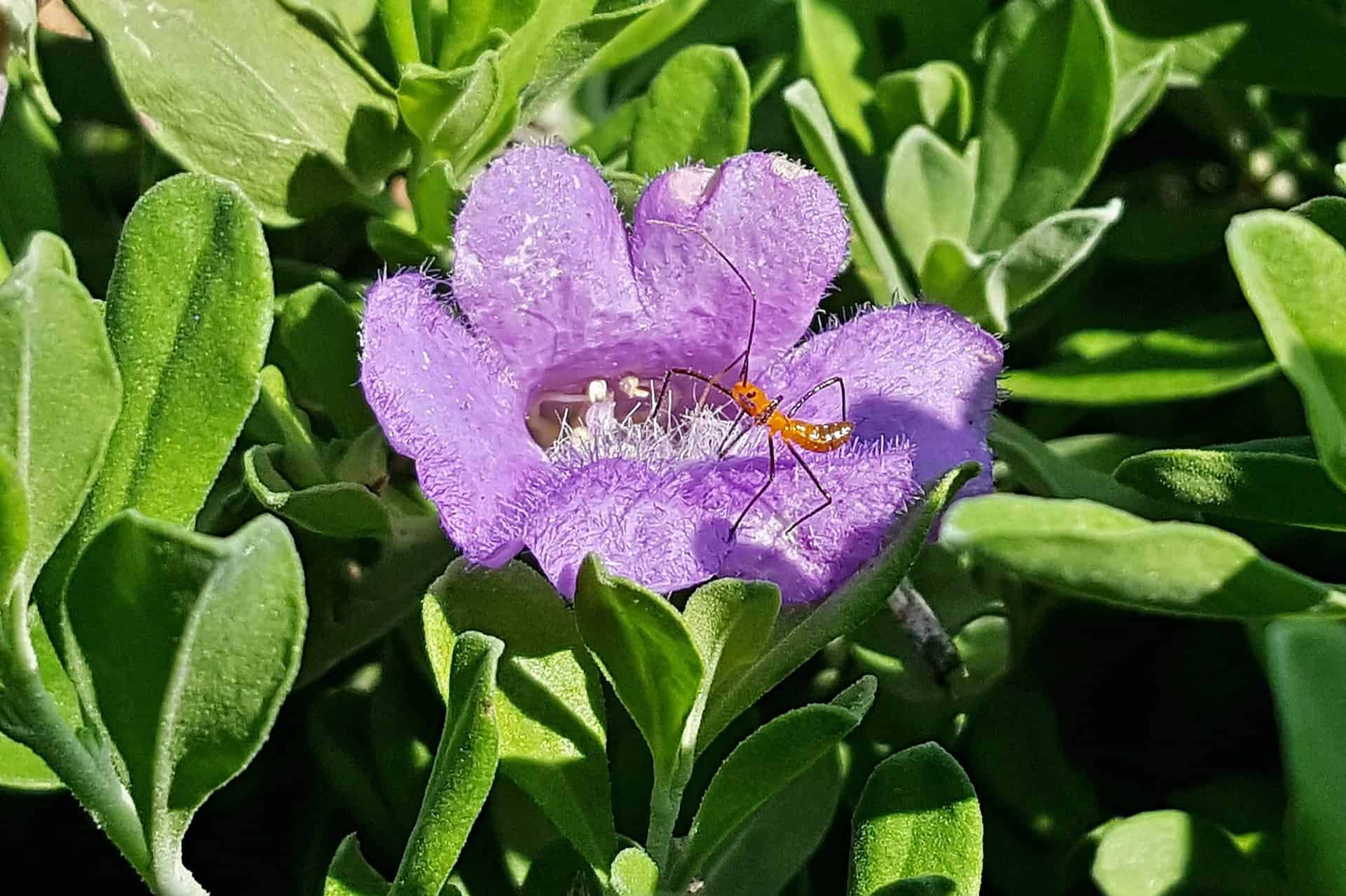
Texas sage care grows in full sun to full shade. Hence, it makes for an essential addition to any garden to add some bright splashes of color. Your young plants can adapt to little shade to the sun during the warmer seasons.
How to Water Texas Sage
Growing Texas sage when it comes to watering is a breeze. When you water Texas sage, it needs moderate watering and can go without water in dry temperatures for a long time.
If you live in rainy climates, you need not add supplemental irrigation as it will survive on the water it receives.
You can water young plants daily until they establish themselves. But you can provide supplemental watering if you live in a desert region with very little water.
Temperature and Humidity
To grow, Texas sage thrives in warm climates and even on the southeast coast. It flourishes in hot summer months with humid to dry conditions. Still, while the Texas sage Leucophyllum is drought-tolerant, it cannot tolerate cold.
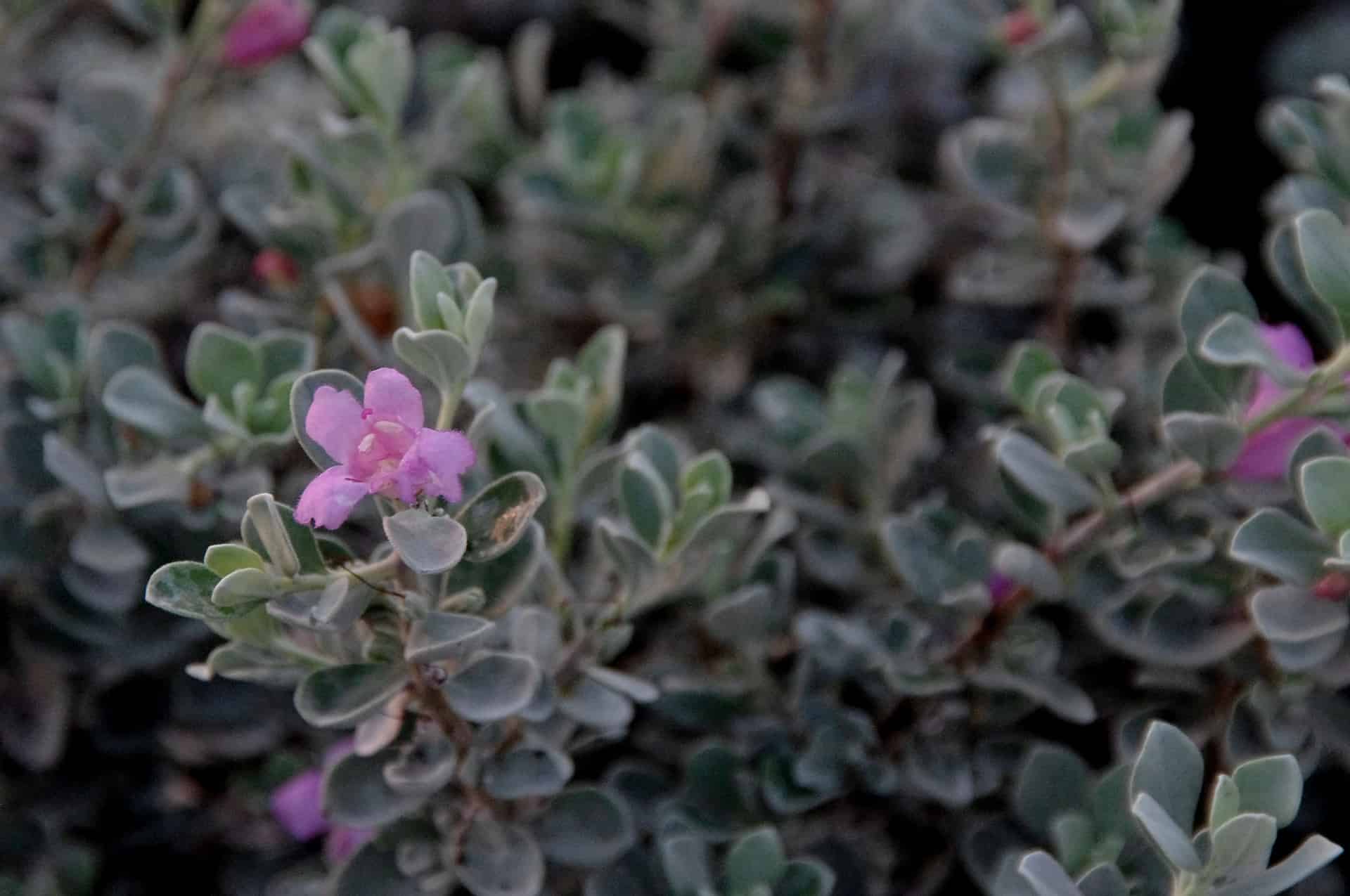
It grows as a perennial to reseed in warm climates, but you must grow the shrub annually in colder climates.
Fertilizer For Texas Sage in Landscape
You need not fertilize these shrubs as they can flower well. This evergreen shrub also doesn’t tolerate overfertilizing. But if your shrub does not bloom, it might need more phosphorus, and is best to provide it with a feed high in phosphorus.
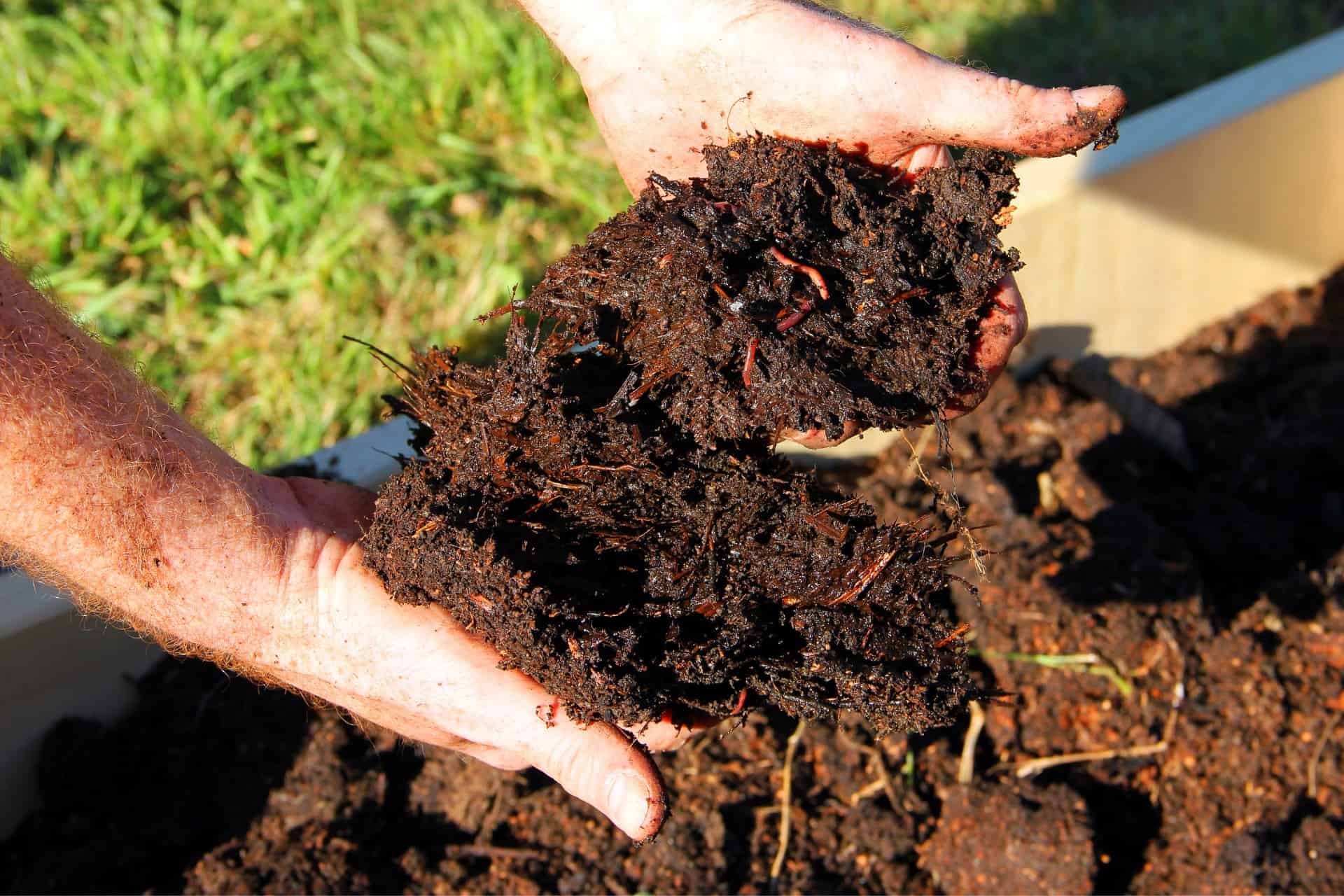
Alternatively, we recommend working in compost to provide the Texas sage with the added nutrients it needs.
How to Prune Texas Sage
When planting your Leucophyllum frutescens in the landscape, and it reaches a mature size, you will need to prune Texas sage back, allowing for new growth in early spring. When planted as an annual, you can remove the entire plant instead of a prune.
But for warmer zones, it self-seeds, so make sure to give it a shake to collect the seeds before cutting it back to sow.
Propagation of Texas Sage Using Seed
As you can see, when you grow Texas sage, it only needs a little water, as too much water leads to concerns like root rot; then, it needs some pruning, fertilizer, and sun to present you with those gorgeous flowers.
This brings us to the propagation using the seeds by collecting them before they fall to the ground. Then, you can place the seeds in a moist starting mix indoors in planting cells to grow indoors.
Leave them standing in bright light for about eight weeks to germinate. Then, after the final frost in early spring, you can move your plant outdoors for about a week. Then, transplant them when they are about four inches tall and divide them as needed.
Baby plants can take a while to establish in the garden for up to two years. Hence, it will need some additional watering.
-
$15.00Sold By: Smoot's Farm
In stock
Cacti Cactus Combo Trio Mix #2 Three Cactus per 4″ Pot Live Plants
Rated 4.89 out of 5 based on 27 customer ratings00Sold By: Smoot's Farm -
$8.99 – $11.99Sold By: Succulent Oasis
In stock
Cactus – Bristle Brush Cactus or Mammillaria Pilcayensis
Rated 4.84 out of 5 based on 352 customer ratings01Sold By: Succulent Oasis -
$24.99Sold By: Succulent Oasis
$30.00In stock
Medium Succulent Plant ‘Angel Kissed’.
Rated 4.84 out of 5 based on 352 customer ratings00Sold By: Succulent Oasis -
Free Shipping$23.99Sold By: Gar-Zen Botanical Design
In stock (can be backordered)
Great Blue Sansevieria Snake plant Ships Free.
Rated 4.86 out of 5 based on 49 customer ratings00Sold By: Gar-Zen Botanical Design
Texas Sage Varieties
In the Texas sage, you can find quite a few varieties to grow together in your garden. As you can see, this is an easy-care plant.
Texas Sage “Silverado”
This Texas sage is a popular variety with compact rounded growth. You get a display of rosy purple flowers best planted in direct sun.
Texas Sage “Desperado”
The plant is drought resistant, with silvery gray foliage and lavender blooms. It also has compact growth and looks great growing as a hedge.
Texas Sage “Compact”
Another shrub with silver to gray foliage covered with lavender to magenta blossoms that needs moderate water and full sun.
Leucophyllum Frutescens Common Problems
The main problems you can find with your plants are aphids and mealybugs. Alternatively, if you do not provide enough spacing with airflow, you may find powdery mildew on your plants. The best to treat the above pests is to use neem oil as prevention.
Then divide your plants when they self-seed by trimming them back.
Frequently Asked Questions
Texas sage is characterized by its compact, rounded shape, silver-gray leaves, and tubular flowers often seen after rainfall. It’s a hardy, easy-care plant known for its drought tolerance, and you need not fertilize them.
Texas sage is an easy-care plant suitable for USDA hardiness zones 8 through 11. It thrives in regions with mild to warm winters.
While the Texas sage is primarily an ornamental plant, some have used its leaves for traditional herbal remedies. However, it’s not as commonly used as other herbs like common sage (Salvia officinalis).
Texas sage is not considered toxic to humans, and ingesting a small amount of the plant is unlikely to cause harm. However, it’s advisable to keep pets away from it, as it may cause gastrointestinal discomfort in animals if ingested in large quantities.
Texas sage is better suited to mild and warm winter climates. It may not do well in regions with freezing winters or frequent frost.
Texas sage can be propagated through cuttings. Take 4-6 inch stem cuttings, remove the lower leaves, and plant them in well-draining soil. Keep the soil consistently moist until new growth appears.
Whether you want to buy, sell, or simply reach out to other plant enthusiasts, Plantly is the right place to be!
-
$12.00Sold By: Cacti and Exotica
In stock
Euphorbia anoplia
Only 9 available and it’s in 1 people’s basketRated 4.98 out of 5 based on 59 customer ratings00Sold By: Cacti and Exotica -
$25.30Sold By: Carlo's Plant Farm
In stock
Ming Toy Daylily | Carlo`s Plant Farm
Rated 5.00 out of 5 based on 22 customer ratings00Sold By: Carlo's Plant Farm -
Free Shipping$21.99Sold By: Gar-Zen Botanical Design
Only 5 left in stock (can be backordered)
Brugmasia Pink Angel Trumpet Ships Free
Only 5 available and it’s in 1 people’s basketRated 4.86 out of 5 based on 49 customer ratings00Sold By: Gar-Zen Botanical Design -
Free Shipping$16.99Sold By: Gar-Zen Botanical Design
Only 2 left in stock (can be backordered)
Turquoise Prickly Pear Cactus Ships Free.
Rated 4.86 out of 5 based on 49 customer ratings01Sold By: Gar-Zen Botanical Design
